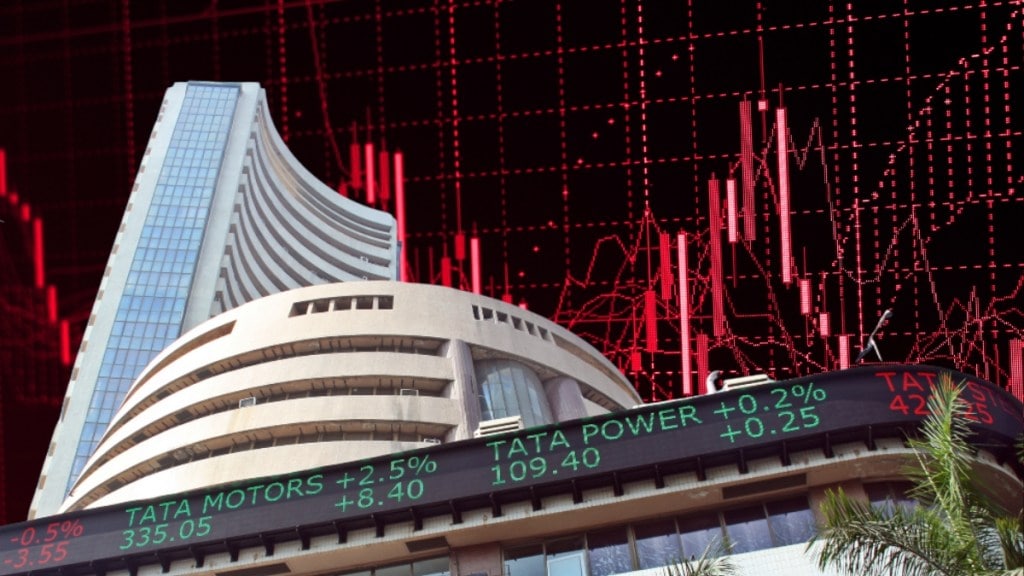The Indian equity market continues to underperform EM peers for the second straight week. The Nifty is stuck in a tight range below the 25,000 mark. The story is not very different if you track the Sensex, either. On a 12-month basis, the MSCI India Index is down 10% compared to the MSCI EM Index delivering 18% gains (in terms of $ returns). What’s even more intriguing is that this is happening at a time when there isn’t a dearth of triggers. From Q1 GDP at 7.8% to GST rate restructure, why aren’t investors enthused, or why are they scared?
Apprehension is what is weighing on investor sentiment, say leading market observers.
Why the new GST rate announcement failed to help maintain momentum
As expected, the market did start on a positive note after the revamp announcement, but soon the enthusiasm made way for profit booking. Sudeep Shah, Head – Technical Research and Derivatives at SBI Securities, explained that “While the markets displayed a positive reaction post the GST new rates announcement, it was kind of a sell-on-news reaction with the larger focus still on the US-India trade deal, which is still unsolved.”
Another reason why the GST cut failed to lift sentiment is the slow pace of capex allocation, as per Siddarth Bhamre, Head of Research at Asit C. Mehta. He pointed out that “though the GST new rate is a good step, the impact will be felt only if the consumption cycle starts. For the consumption cycle to start, one needs to see strong capex. The best way to improve earnings visibility is undertaking big capex projects that guarantee job and industry growth.”
Vinod Nair, Head of Research, Geojit Investments, added that “Domestic growth-linked sectors stand to benefit from GST relief, resilient consumption, and government spending, while uncertainty over global trade negotiations continues to restrain risk appetite.”
Tariff uncertainty a key worry
As the markets get set for the second week of September, a traditionally weak month for equity markets globally, worries about the US tariffs (50% headline, 35% effective) weakening exports for India take pole position on the list of concerns across the investor community.
Market veteran Ajay Bagga listed out the key worries for investors at the moment, “Huge FPI outflows, underwhelming corporate earnings, and fragile sentiment on the back of punitive Trump Tariffs of 50% all contributed to a second successive negative month for Indian markets. Starting September, which is seasonally one of the weakest months for global markets, India has a small booster in the form of April-June quarterly GDP numbers coming in very robust at 7.8% YoY growth.”
Rupee slips to new lows
However, despite the GDP print and the new GST rate, a weak rupee Vs US dollar weighed on sentiment. The rupee hit a new low this week. Shah of SBI Securities added that “the other factor which contributed to the negative momentum over the past 2 days was on account of continued selling pressure in the cash segment along with the rupee plummeting to new lows against the dollar.”
The Indian rupee clocked its second consecutive weekly decline against the US dollar. This depreciation, as per money market experts, was driven by continued capital outflows and uncertainty surrounding the US-India trade deal.
FII selling and India’s valuation premium Vs EM peers
In fact, the continuous FII selling is one of the primary concerns for the market. India has seen outflows, just short of Rs 50,000 crore for two consecutive months – July and August – and the FII selling in 2025 so far exceeds the total 2024 outflow. FIIs have sold $15.3 billion till August compared to a total outflow of $0.8 billion in entire 2024.
But the FII outflows are not just a function of domestic cues. One must also see the global setup. We spoke to Nilesh Shah, MD, Kotak Mahindra AMC earlier this week, and he had listed out some of the key factors contributing to the outflow. These include
“- FPIs have made a lot of money in India, unlike other emerging markets, whereby India allocations have become disproportionately high.
-Some selling is driven by short-term valuation concerns.”
As he explained, the disproportionately high allocation to India and India’s relative valuation premium compared to EM peers are key considerations for FIIs. If one tracks the FPI flows in September so far, markets like India (outflow of $371 m), Brazil (outflow of $32 m), Indonesia (outflow of $254 m), Malaysia, Philippines, Thailand, and Vietnam witnessed outflows. However, markets like South Korea and Taiwan witnessed inflow. Incremental liquidity is being largely channelled into global, China, and Hong Kong funds. On the relative valuation metrics, markets like China and Hong Kong are trading at half of India’s valuation. This valuation gap is seen as playing a major role in deciding the direction of global FII flows.
What’s the strategy now?
What should be the right investor approach at this point, given the global headwinds? Vinod Nair, of Geojit Investments, highlighted that a “multi-asset investment strategy is expected to gain traction in this environment. Market attention remains firmly on the upcoming U.S. jobs report, a key macro trigger that could shape expectations for a potential Fed rate cut. Also, investors will closely track key macro cues, including U.S. nonfarm payrolls, unemployment and inflation data, as well as the ECB’s rate decision, for direction in the week ahead.”

